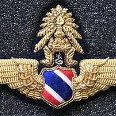Color Slides Scan?
-
Recently Browsing 0 members
- No registered users viewing this page.
-
Topics
-
-
Popular Contributors
-
-
Latest posts...
-
5
How often do you, irrationally, believe you have a brain tumor?
You're a better man than I am, Gunga Din! -
5
How often do you, irrationally, believe you have a brain tumor?
You always post the most germane and logical responses to my Topics. What....? Are you, also, from Penn? Everything is fair, in love and war, including the Kitchen Sink.... I learned this from Elon. -
5
How often do you, irrationally, believe you have a brain tumor?
Severe mental hell? I guess nobody is immune to severe mental hell, from time to time.... This is just part of the glory concomitant with the more pleasurable aspects of being alive. There is no heaven without hell. And, there is no rationality without irrationality. And, sometimes, irrationality rules. -
5
How often do you, irrationally, believe you have a brain tumor?
ONLY when I'm reading one of your topics. But I've been told that limiting this behavior would help prevent further onset of that frightful condition. -
18
Report Clear Pricing Mandate: Thai Restaurants Face 10,000 Baht Fines
Get up and leave without ordering before you get a nasty surprise!!! -
14
Fatal FLA. Freeway Crash gone viral news...
The DOT head is going to investigate the Trucking Company too. I’ve directed @FMCSA to investigate the driver and White Hawk Carrier involved in the deadly Florida crash.
-
-
Popular in The Pub



.thumb.jpg.3ee24d9400fb02605ea21bc13b1bf901.jpg)




.thumb.jpg.bc523c85a8d558dbc282dca7a2e602c9.jpg)
Recommended Posts
Create an account or sign in to comment
You need to be a member in order to leave a comment
Create an account
Sign up for a new account in our community. It's easy!
Register a new accountSign in
Already have an account? Sign in here.
Sign In Now